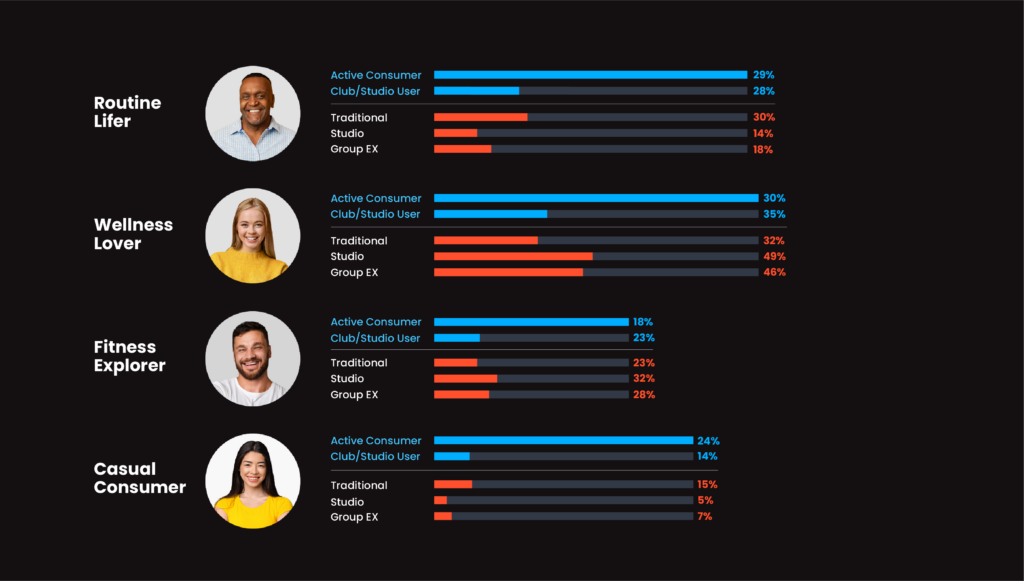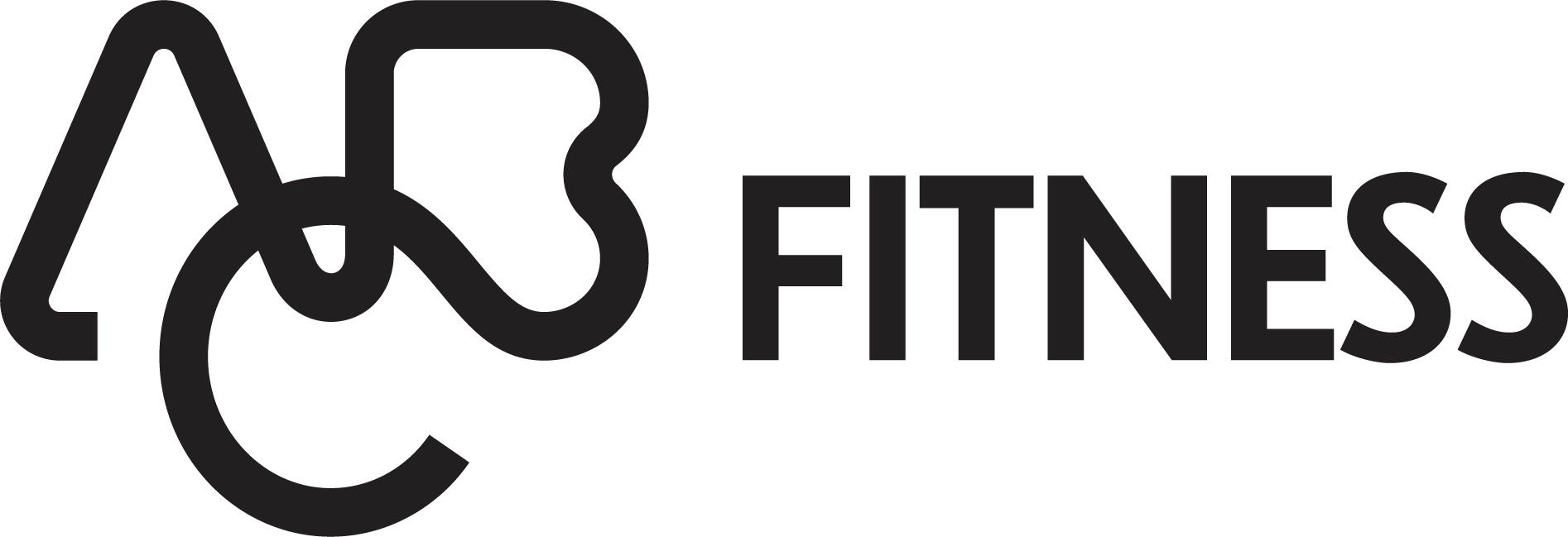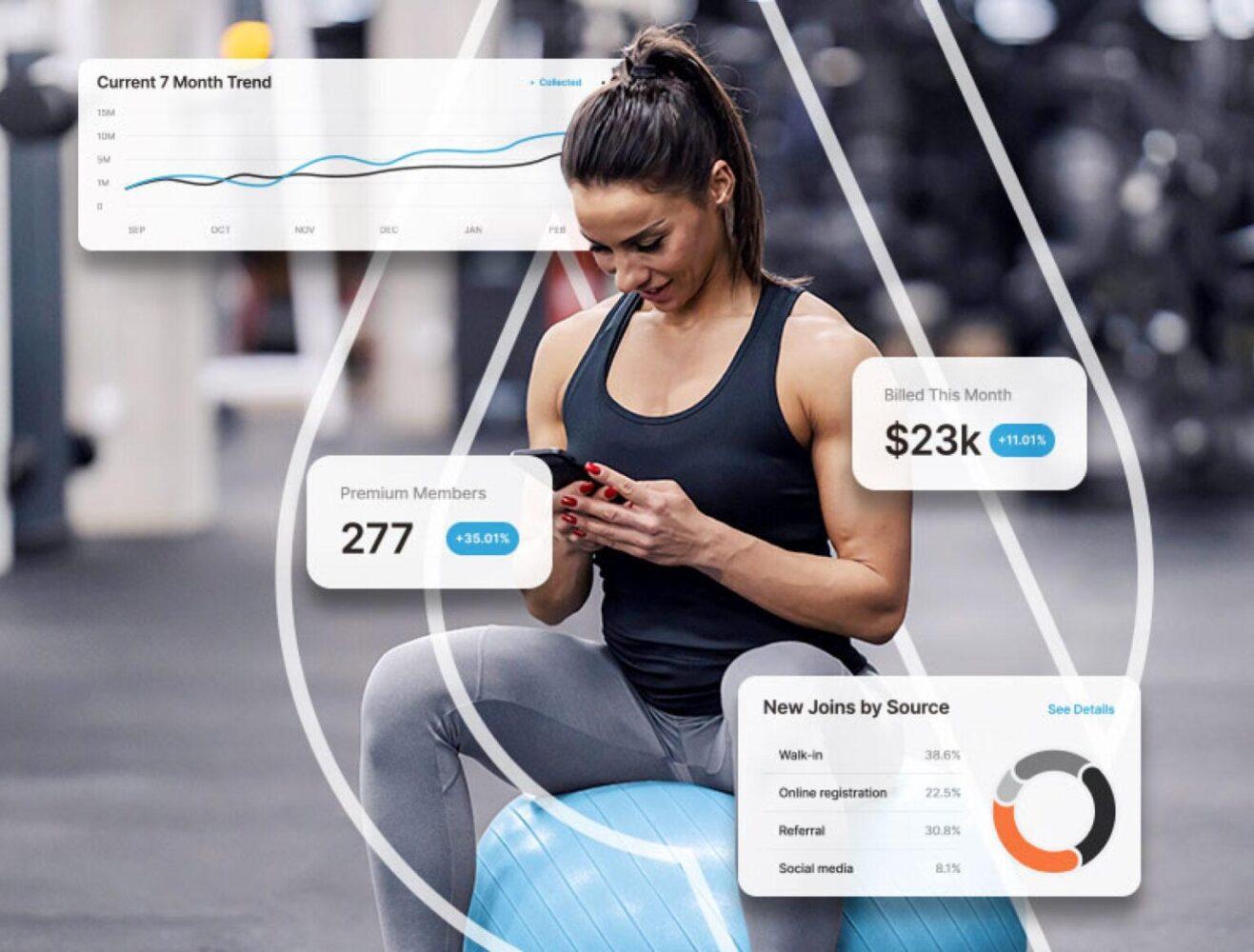How To Win with Gen Z: Embrace Digital Native Lifestyle and Celebrate Individuality
Here, our CEO Bill Davis shares his thoughts on how to best attract the Gen Z generation: the new driving force of the fitness industry.
In the ever-evolving landscape of the fitness industry, it is imperative that we stay attuned to the changing preferences and demands of consumers. Today, I want to shed light on two insightful research studies published this year that highlight how the fitness industry can adapt to and thrive as Generation Z’s (Gen Z’s) become the latest cohort to enter adulthood and become 40% of the global spending population.
Our own “The Gen Z Fitness Consumer – The Complete Guide,” and “Gen Z Fitness: Cracking The Code” by Les Mills both delve into the behavior, preferences, motivations, challenges, and attitudes of Gen Z’s when it comes to staying fit and healthy. They explored ways in which club owners and managers can adapt their businesses to suit this population.
Born between 1997 and 2012, Gen Z’s, also known as Zoomers, have a global disposable income of $360 billion. According to both our and Les Mills’ research, Gen Z’s are set to be the driving force in shaping the future of the fitness industry and will have the biggest impact on the fitness industry of any generation.
Their approach, attitudes, and values are different from previous generations. Gen Z’s are characterized by their individuality, yet they’re digital natives who have never known a world without the internet or mobile devices.
This generation is digitally proficient, has a desire for work-life balance, and is social yet highly expressive of their individuality. These present both challenges and opportunities for the fitness sector. Common attributes and Gen Z characteristics that were identified in both reports include:
- Diversity and Inclusivity: Gen Z consumers value diversity and inclusivity and are far more likely to embrace diverse cultures, lifestyles, and identities than previous generations.
- Social Justice and Activism: This generation is passionate about social justice issues such as racial equality, gender equality, LGBTQ+ rights, and climate change. They actively support these causes.
- Individuality and Self-Expression: The Gen Z generation values self-expression and often uses social media to highlight their unique personalities and interests.
- Entrepreneurship and Innovation: Many Gen Z members are entrepreneurial and innovative, often pursuing non-traditional career paths.
- Work-Life Balance: Gen Z consumers prioritize work-life balance, which includes flexibility and autonomy in their work arrangements.
It is important to acknowledge that not all members of Gen Z will share all these values or characteristics, but they serve as a good framework to have in mind when thinking of how to engage with these young adults. This was very apparent in our annual research. Gen Z members can be Wellness Lovers, Fitness Explorers, or Casual Consumers. You can see the New Fitness Persona demographic break out from our eBook here:

30% of active consumers are classed as Wellness Lovers who prioritize fitness nutrition and mental and physical wellbeing to have balanced wellness.
18% can be considered Fitness Explorers, early adopters who look for new fitness programs, products, and services to include wellness.
24% consider themselves Casual Consumers, motivated by specific events and experiences.
Interestingly, when you break them out into the New Fitness Persona, Wellness Lovers tend to go to the Studio, whereas Casual Consumers are more likely to work out at a traditional gym.

How, Where, and Why They Work Out
According to the Les Mills report, more than a third (36%) of Gen Z consumers are exercising regularly, while 50% want to start – representing a huge ‘untapped market.’ In addition, 30% of Gen Z consumers are already regularly using fitness facilities. Traditional Health Clubs are the top facility for Gen Z Membership, and while they have a higher-than-average workout frequency, between 4X to 12X a month, they are less likely to work out more than 12 times a month compared to other generations.
The most prevalent fitness goal with Gen Z members is to maintain or improve mental health and reduce stress, followed by losing weight and remaining active. Interestingly but not surprisingly, for the YouTube and Instagram generation they are twice as likely than other cohorts to state being in vacation or beach shape as their fitness goal.
When exploring various Consumer Fitness Profiles, Gen Z members are more likely than average to fit into the Wellness Lovers and Fitness Explorer categories. 36% are classed as Wellness Lovers who prioritize fitness nutrition and mental and physical wellbeing to have balanced wellness.
Two-thirds can be considered Fitness Explores, early adopters who look for new fitness programs, products, and services to include into wellness. This is significantly higher than the average population, where 23% of members would be considered Fitness Explores.
While Gen Z members prefer to work out alone, they are more likely than the general population to participate in small groups and personal training. 29% also regularly participate in group classes. 72% of Zoomers who regularly exercise do so both in and outside of the gym, and 92% carry out at least half their workouts in the gym. Not surprising for so many that are Fitness Explorers, 64% strongly agree they like to do different workouts and discover new ones.
Money & Values Matters
Gen Z members’ monthly exercise expenditure matches the general population at the $75-$99, the $100 to $149, and the $200+ per month price points. However, they skew slightly higher than the average population at the $25-49 per month range. They are prepared to spend slightly more than the average on Health Club dues, with the optimum price point for all members being between $40 – $60 per month compared to $48 and $65 a month for Gen Z.
Zoomers value experiences and are prepared to pay for them. Club operators must appeal to hearts and minds and offer experiences that reflect Gen Z values rather than just offering value for money.
True to the Fitness Explorer profile, Gen Z members are willing to pay between $58 and $75 a month for classes at a studio and 44% regularly exercise using paid fitness apps outside of the gym.
When spending on ad hoc services, Zoomers prioritize products and services that improve mental health. The ABC report also found a supply shortage of products and services that address biotech wellness therapies, spiritual wellbeing, and mental health.
While debit cards are the preferred payment method for 52% of Gen Z consumers, digital payment services are increasingly being used by this generation. In the past year, Gen Z consumers have paid using a multitude of digital payment solutions, including Venmo and CashApp, (both 33%), Apple Pay (31%), and PayPal (30%).
Gen Z consumers place a high value on experiences and companies that share their values. Fitness is a key experience in their lives. When asked what they will absolutely NOT give up if the economy worsens, nearly ½ of those surveyed would rather give up eating out or leisure travel before they give up their gym membership.
How To Reach Gen Z
Given the unique personas, values, and behavior of Gen Z population, club operators must evolve their offering and engagement strategies to meet a new breed of consumer. Some key takeouts from the reports that can be applied to club operations include:
- Offer flexible membership options: Gen Z’s place a premium on flexibility and a range of tailored options. Health club operators can provide versatile membership choices to cater to different lifestyles, pay-as-you-go, short-term, or long-term memberships prove appealing to this new demanding cohort.
- Expand payment options: Embrace mobile payments and digital wallets and explore purchases through Venmo, Cashapp, Paypal Apple and Google Pay.
- Diversify Class Offerings: Gen Z’s crave variety and enjoy exploring new experiences. Health club operators can diversify their class offerings to appeal to various interests, encompassing activities like yoga, dance, kickboxing, and high-intensity interval training (HIIT).
- Embrace Technological Integration: Gen Z’s, being tech-savvy, highly value the integration of technology for convenience. Health club operators can embrace technological integration by incorporating fitness tracking apps, virtual classes, and online coaching into their services.
- Focus on social connection: Gen Z’s value social connection and wants to be part of a community. Health club operators can focus on creating a welcoming and inclusive environment that fosters social connections through group classes, social events, and online forums.
- Champion Sustainability: Gen Zs are environmentally conscious and place a high value on sustainability. Health club operators can champion sustainability efforts by using eco-friendly materials, minimizing waste, and promoting environmentally responsible practices.
- Get Social: Connect with digital natives through the social channels they most use and trust. From information, advice, and engagement, harness YouTube, TikTok, Snapchat, and Instagram and create a “picture” moment wherever possible that helps facilitate their personal expressions of individuality.
Embracing the Gen Z generation can capture the imagination of creative club and gym owners and directly affect the bottom line. While I have touched on a few points here, The Gen Z Fitness Consumer – The Complete Guide can be downloaded in full here. It is packed with interesting facts, figures, and strategies to help club operators of all sizes understand and engage with the new dominant force in consumer marketing.


